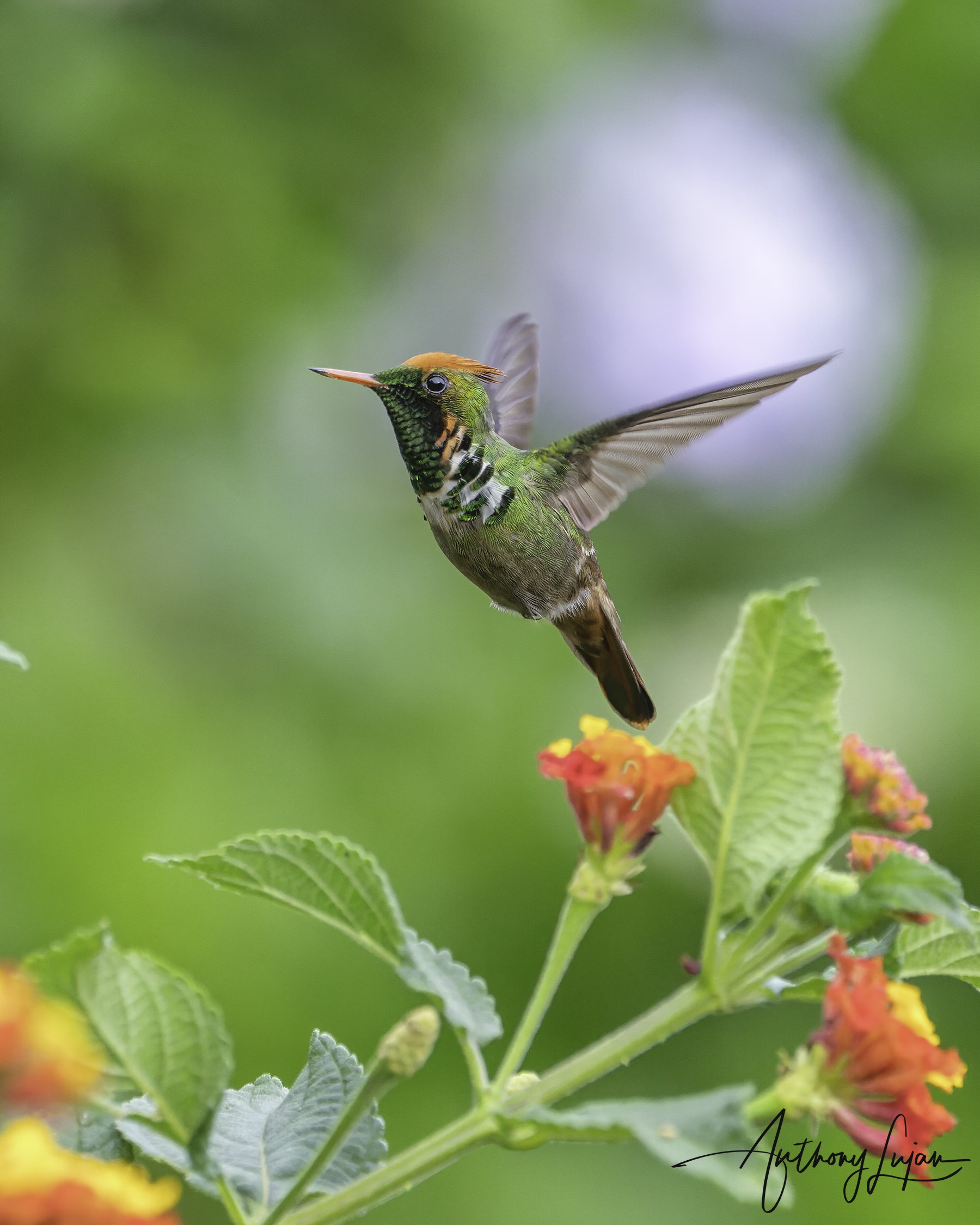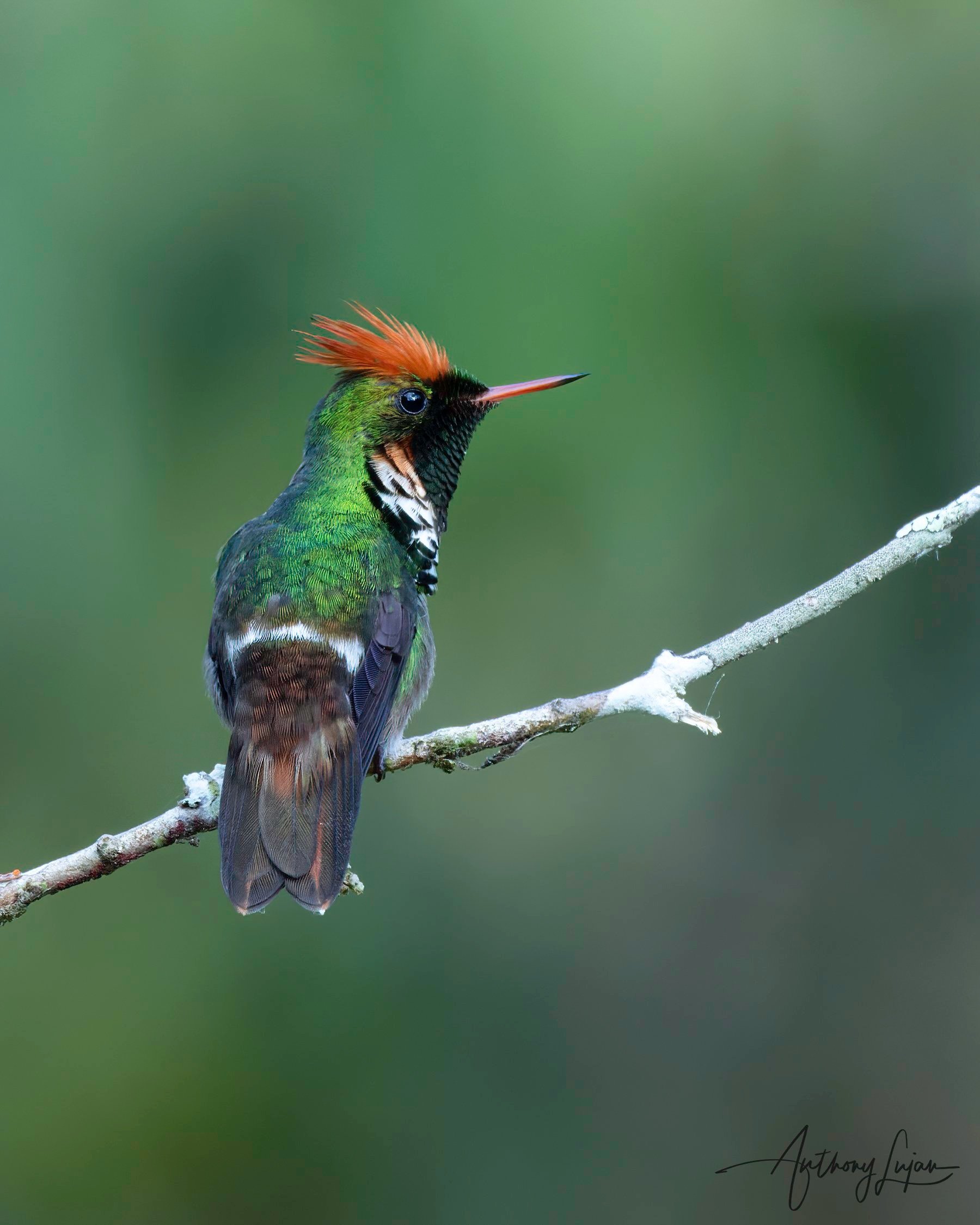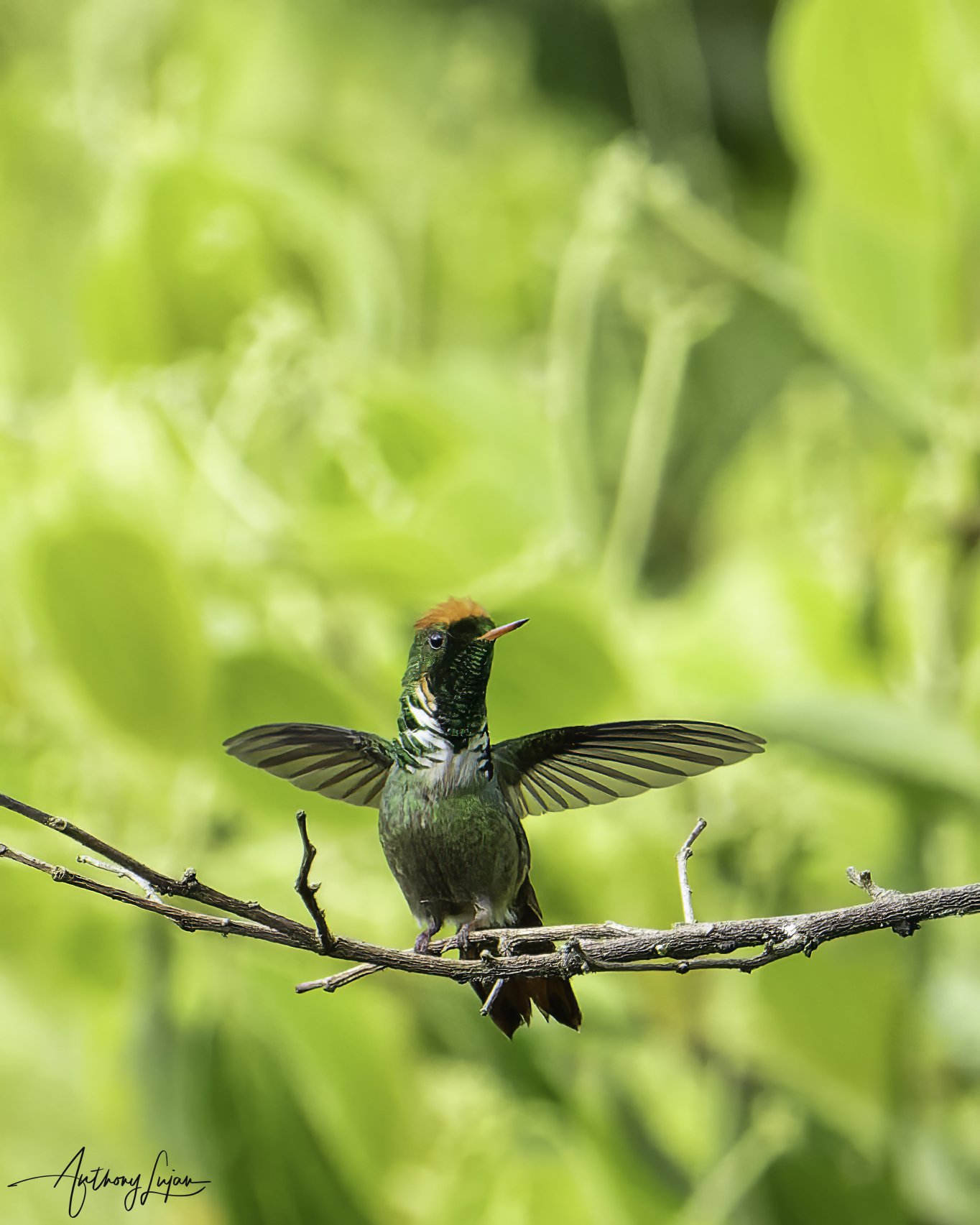Frilled Coquette
Frilled Coquette (Lophornis magnificus)
Name Origin:
The genus Lophornis is derived from Greek lophos (“crest”) and ornis (“bird”), referring to the distinctive crested heads of these dazzling species. The epithet magnificus means “magnificent” in Latin — a fitting tribute to the bird’s spectacular display plumage.
Quick Facts
🪶 Length: 6.5–7.5 cm (2.6–3.0 in)
⚖️ Weight: 2.2–2.7 g (0.08–0.10 oz)
🌎 Range: Endemic to eastern Brazil
🧭 Elevation: Sea level to 1,400 m (4,600 ft)
🌸 Diet: Nectar and small insects
🏡 Habitat: Atlantic Forest edge, secondary woodland, plantations, and gardens
🧬 Clade: Lophornithini “Coquettes” (ornamental forest hummingbirds)
📊 Status: Least Concern (IUCN 2024)
Subspecies & Distribution
Monotypic species — no recognized subspecies.
Distribution: Endemic to eastern and southeastern Brazil, from Bahia and Minas Gerais south through Espírito Santo, Rio de Janeiro, São Paulo, Paraná, and Santa Catarina. It inhabits humid Atlantic Forest, forest edges, clearings, and gardens, most commonly below 1,200 meters elevation.
Species Overview
The Frilled Coquette is a tiny, radiant hummingbird that embodies the lush vibrancy of the Atlantic Forest. Males are instantly recognizable by their extravagant copper crest and fan-shaped, iridescent throat “frill.” Despite its size, the species is bold and inquisitive, frequently visiting flowering trees and shrubs even in semi-urban gardens.
Male Description:
The male has bronzy-green upperparts, a glittering golden-green throat, and a spectacular rufous crest and frilled gorget edged with green and copper. The underparts are buff with green spotting, and the tail is coppery-rufous. White post-ocular tufts contrast against the darker crown. The male’s plumage shines intensely in sunlight, especially during display flights.
Female Description:
The female lacks the crest and gorget but shares the bronzy-green upperparts and rufous tail. The underparts are pale buff with green spots, and she has a white stripe behind the eye. Her plumage, though subtler, is elegant and well-camouflaged among the forest foliage.
Habitat & Behavior:
Occupies edges and clearings of humid Atlantic Forest, as well as secondary woodlands and cultivated areas. Commonly feeds on nectar from Heliconia, Stachytarpheta, Inga, and Erythrina, hovering with rapid, bee-like wingbeats. The Frilled Coquette performs quick pendulum-like flight patterns while feeding and may aggressively chase larger hummingbirds from favored flowers. Males are territorial and often use exposed perches for displays.
Conservation Note:
The Frilled Coquette is listed as Least Concern by the IUCN but is locally uncommon due to the ongoing loss and fragmentation of Atlantic Forest habitat. It persists in protected reserves such as Serra do Mar State Park, Itatiaia National Park, and Reserva Natural Vale. Continued preservation and restoration of lowland Atlantic Forest fragments are vital to maintain stable populations of this visually stunning Lophornithini species.





